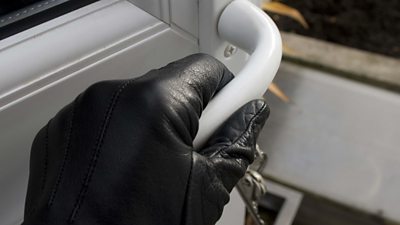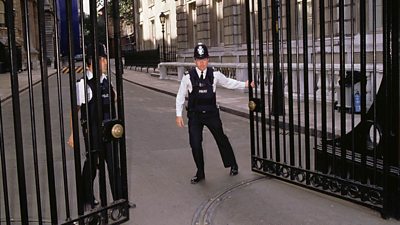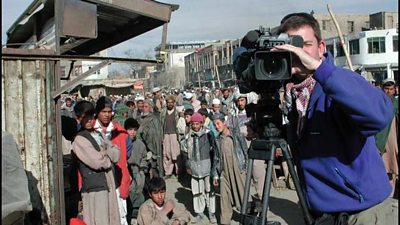What Can Go Wrong?
- Manual handling – risk of upper limb or back injury when carrying equipment alone
- Personal security - becoming a target of opportunistic personal attack or theft
- Isolation - not having someone to summon help in event of accident / ill-health.
Legal/91�ȱ� Requirements
- Safety law places a duty on employers to ensure the health, safety and welfare of all workers, at all times, including when working alone.
Control Measures
Management Issues
- Line Managers / Producers / Deployers must assess the risks of the work and location, and assess the competence, experience and capabilities of the individual to manage and mitigate these risks
- Always be satisfied that the job is suitable for lone working before it starts. Some situations/stories will not be suitable, especially where the risks identified cannot be adequately controlled e.g. where there is potential for violence, crime, crowds etc.
- Ensure control measures are in place to reduce the risk where trouble is suspected, e.g. two (or more) person crew, a minder, or consideration given to not working there at all
- Plan transport to location. Driving in remote places alone is rarely a good idea - accidents and even simple breakdowns can leave a lone worker in a vulnerable situation where they are less able to respond should things go wrong (even changing a tyre can be difficult). If unavoidable, the route should be well planned and stuck to, any changes to the route must be called in. The driver should drive defensively and make sure they are fully equipped for any possible eventualities
- Ensure there are arrangements in place to keep in contact with base e.g. a mobile phone, radio or a check-in procedure when the person is working away from base at third party premises / contributors home / remote locations.
The check-in procedure should cover:
- Appropriate and effective means of communication and means of raising the alarm e.g. will there be a mobile signal?
- Knowledge of where people are, their routes and what time they are expected to be back
- How will contact be maintained and how will the alarm be raised if they get into trouble
- A plan of action if the lone worker fails to check-in
- Check-in procedures should be known to all relevant people and regularly reviewed
- Procedures/contacts should work in case of emergencies and “out of hours”.
Planning
- The manager of a person working alone must respect their decision to withdraw from an activity if this is for safety or security reasons
- Recce the area to check local conditions and identify risks to personal safety and potentially vulnerable individuals
- Establish the intended routes, locations, activities and return times. If plans change the updated information should be relayed to base
- Plan choice of transport to minimise risk. Plan parking arrangements and routes in and out of a location
- Plan job to minimise lifting and carrying
- At no time should there be any compromise between ability to escape in emergency and any security measures in place in the building
- Recording for digital - the way we gather footage is changing. 91�ȱ� Radio and TV reporters often find themselves deployed to record for social media when out and about, as well as doing their day job. If you’re not used to recording this kind of images then our top tips should help you plan what you’re going to do safely (see Useful Documents).
Briefing
- People who will be working alone should be given a briefing about controls that are in place to reduce the risk, including:
- The recognition of potentially violent situations or behaviour
- Avoidance techniques - withdrawing from the situation if there is risk of verbal or physical attack.
In 91�ȱ� offices and studios you will need to consider:
- Who knows where the person is and what they are doing?
- Emergency procedures for the building should be in place
- Do staff know where any panic button is and are staff trained on how to use it?
- Encourage lone workers to carry a charged mobile phone with them at all times
- The risk of unauthorised entry into premises where staff work alone should be reduced e.g. card readers or keypads, especially if security staff are not present.
Working at Third Party Premises/On Location
- Consider whether lone workers should wear their 91�ȱ� ID. Depending on the circumstances, this can either reduce or increase the risk to a lone worker
- Self-deployment - Health and safety responsibilities remain the same whether you are working on your own, or with others. A responsible manager (or in news the newsdesk) should always know where you are and what you are doing. Therefore a self-deployment should not be treated differently to any other deployment. You should ALWAYS let your responsible manager know your location and what you are doing as soon as possible. This will allow your self-deployment to be recorded and a risk assessment to be completed
- Ensure your mobile phone is fully charged, with reception coverage and make regular contact with someone back in the office
- Staff should be informed that if a situation deteriorates in a potentially hazardous way. They must:
- Immediately decide on and take the safest course of action and, if necessary, withdraw
- Inform their manager/producer, or on site security staff of their decision and action(s) as soon as possible
- Re-assess the risks, and consult with the Producer or Location Manager if significant concerns arise
- Be alert to the possibility of unprovoked abuse, threats and even violence, particularly when working in a public place
- Any violent incident must be reported as soon as possible to the producer or manager to decide if action needs to be taken and to help with future risk assessments.
- Use door to door transport if available
- Use trolley and back packs
- Share load with others e.g. taxi driver, porter
- If working at a third party premises, staff should be aware of the local emergency arrangements and know what to do in the event of an emergency.
Division Specific Issues
- Incorporating Radio OB MS M002-09 Working Alone.
FAQs/Did You Know?
- For additional information the HSE publish a booklet called - it is aimed at anyone who employs or engages lone workers, and also at self-employed people who work alone
Useful documents
Recommended links
-
Health and Safety guidance on the risks of lone working
Personal security topics
-

Security (Personal)
Measures you can take to help protect yourself -

Security (on Location)
Advice for maintaining security on productions -

Covert Filming
A guide to a genre of programmes which involve investigative journalism, surreptitious and covert filming or recording, creating potential personal security risks. -

Courts of Law
A guide to working in, outside or, around courts following a news story. -

Demonstrations, Protests, and Crowds
91�ȱ� Safety has a whole host of safety guidance to assist teams when they are planning a deployment to a demonstration or protest. -

Door-Stepping
The risks of obtaining an interview, or piece to camera, from a contributor without prior arrangement or agreement. -

Harassment and Stalking
Guideline to harassment and stalking, including internet / social media trolling. -

Lone Working
This Guideline sets out the hazards and precautions to be considered when lone working, whether it is in the office, on location or overseas. -

Security on Location
Guideline provides measures to help mitigate the security threats associated with production activities on location, including door-stepping, covert filming, working with crowds and public order issues. -

Violence and aggression
Guidance on dealing with violence and aggression
More from SSR
-
Your platform to record accidents, risk assessments, assurance monitoring and inspections
-
Safety Equipment Stores
Just one number to call: 020 3614 5155 -
91�ȱ� Safety Guidelines
An A-Z of 91�ȱ�'s Health and Safety Guidelines -
Safety Advice Line: 0370 411 0464 Email: safety@bbc.co.uk
Events guidance - key links:
- Exhibitions
- General Guidance
- Indoor Location Recce Checklist
- Outdoor Location Recce Checklist
- Major Incidents & Emergency Planning
- Marketing and Promotional
- Noise Exposure
- Planning and Management
- Responsibilities
- Responsibilities Form
- Laser Lighting Effects
- Strobe Lighting
- Temporary Stages and Rostra
Health topics - key links:
- (91�ȱ� network only)
- Contributors Fitness to Participate
- Display Screen Equipment (DSE)
- (91�ȱ� network only)
- First Aid and Welfare on Location
- International Travel - Risks & Health
- Manual Handling
- Mental Health: 91�ȱ�page
- (91�ȱ� network only)
- Personal Health and Wellbeing
- Pregnancy
- Psychological Trauma Support & Trauma Risk Management (TRiM)
- Tiredness and Fatigue
- Travel Health Contacts
91�ȱ� High Risk - key links:
- CBRN and Industrial Spills
- Covert Filming
- Crisis Management and Security Support
- Demonstrations, Protests and Crowds
- Disaster Coverage
- Door Stepping
- (91�ȱ� network only)
- (91�ȱ� network only)
- Public Order
- Safety Equipment Stores
91�ȱ� Journalism - key links:
91�ȱ� Productions - key links:
- Aerial Filming and Airfields
- Animals: Displaying and handling for performance
- Boats: Working on
- Children and Young People
- Driving
- Electrical Equipment and Systems
- First Aid and Welfare on Location
- Food Safety (Cooking and Catering)
- Remote Location Working
- Roads and Streets: Working by
- Security of Productions on Location
- Stunts
- Tiredness and Fatigue
- Unmanned Aerial Systems (UAS aka Drones)
- Vehicles: Recording in, from and around
- Working at Height: Mobile Elevating Work Platforms
- Working at Height: Tower Scaffolds
91�ȱ� Radio - key links:
- (91�ȱ� Network only)
91�ȱ� Security - key links:
91�ȱ� Sport - key links:
About this site
This site describes what the 91�ȱ� does in relation to managing its health, safety and security risks and is intended for those who work directly for the 91�ȱ�.
It is not intended to provide instruction or guidance on how third parties should manage their risks. The 91�ȱ� cannot be held liable for how this information is interpreted or used by third parties, nor provide any assurance that adopting it would provide any measure of legal compliance. More information
Some links on this site are only accessible when connected to the 91�ȱ� network
